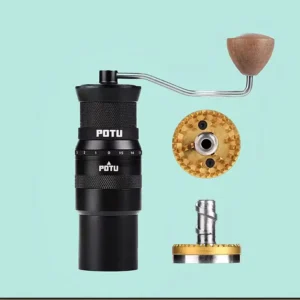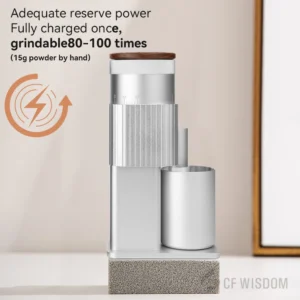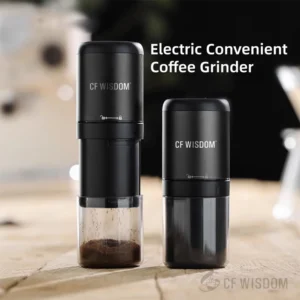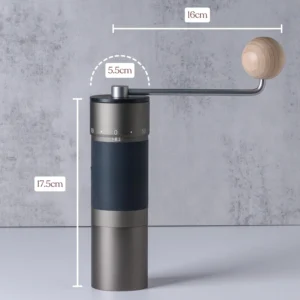What Is the 30-Second Rule for Espresso? Understanding the Basics
The 30-second rule for espresso refers to the guideline that an ideal double espresso shot should extract in approximately 25-35 seconds to achieve optimal flavor balance. Rather than being a strict law, this timeframe serves as a starting benchmark for espresso enthusiasts seeking that perfect cup. The timing typically begins when the pump activates and ends when the desired volume is reached—usually about 2 oz (60ml) for a standard double shot.
At its core, the 30-second rule exists for one primary reason: to achieve balanced extraction of flavor compounds that creates a harmonious espresso experience. When extraction falls within this window, you’ll taste a pleasing balance of acidity, sweetness, and body without overwhelming bitterness or sourness.
When shots extract too quickly (under 20 seconds), the result is typically under-extraction, producing a sour, thin-bodied espresso lacking complexity. Conversely, when shots run too long (over 40 seconds), over-extraction occurs, yielding bitter, harsh flavors that overwhelm the palate. Understanding these fundamental principles of espresso precision provides the foundation for consistently excellent shots.
The proper timing creates a distinctive flavor profile that balances brightness with richness—something that’s instantly recognizable when you achieve it and noticeably absent when you don’t. Mastering the relationship between espresso grind settings and shot timing is essential for consistent results.
The Science Behind Extraction Timing: Why 30 Seconds Matters
Coffee extraction is a complex chemical process where hot pressurized water dissolves soluble compounds from ground coffee. What makes the 25-35 second window so special is the sequential nature of this extraction.
When water first contacts coffee grounds, it begins dissolving compounds in a specific order:
- First (0-15 seconds): Acids and some aromatic compounds extract quickly, contributing bright, fruity flavors
- Middle (15-25 seconds): Sugars and caramels dissolve, adding sweetness and body
- Last (25+ seconds): Plant fibers and bitter compounds begin to extract more heavily
This sequential extraction directly correlates to taste outcomes. Too quick an extraction captures primarily acids without enough sweetness to balance them. Too long, and bitter compounds dominate, overwhelming the more delicate flavors.
The sweet spot—that 25-35 second window—aims to extract approximately 18-22% of the coffee’s soluble compounds. This percentage range represents the ideal Total Dissolved Solids (TDS) that professional baristas target for balanced espresso. Understanding how grind size affects espresso extraction helps you manipulate this process for better results.
The Extraction Golden Window: Finding Your Perfect 25-35 Second Range
While the 25-35 second window serves as an excellent starting point, how you measure this timeframe matters for consistency:
- Pump activation timing: Most common method, starting the timer when you engage the brew button
- First-drip timing: Starting the count when coffee first appears from the portafilter
- Pre-infusion consideration: Deciding whether to include low-pressure pre-infusion in your total time
What’s most important isn’t necessarily which method you choose, but being consistent with your approach. This allows you to make meaningful adjustments based on taste and maintain reproducibility.
It’s worth noting that this golden window might shift slightly based on your specific equipment, bean selection, and personal preference. Some machines or coffee varieties may perform best at slightly different intervals while still producing excellent espresso. The key is using this timeframe as a reliable starting point rather than an immutable rule.
Grind Size: The Most Critical Factor in Controlling Extraction Time
Of all variables affecting extraction time, none has more immediate impact than grind size. This single factor can transform a 15-second gusher into a 45-second trickle, dramatically altering flavor along the way.
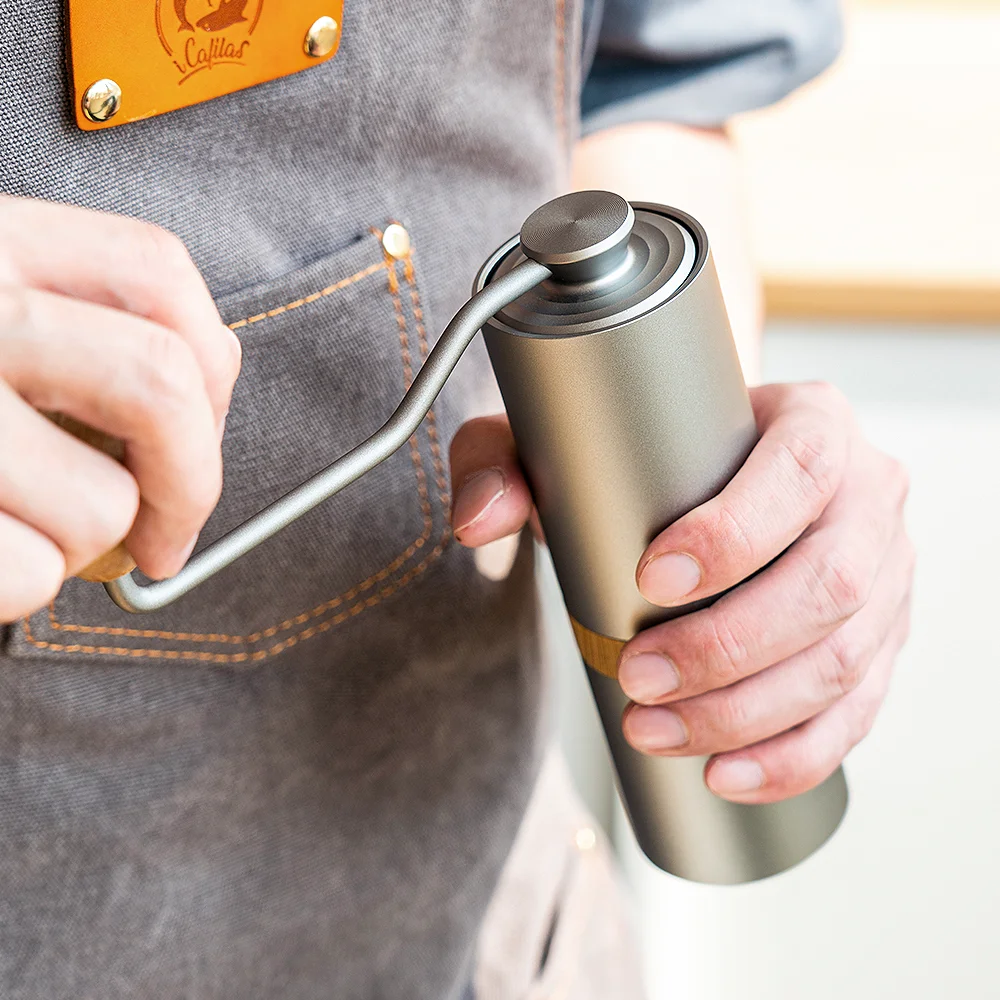
Grind size controls extraction time through simple physics—finer grounds create more resistance to water flow, extending contact time between water and coffee. This relationship creates predictable outcomes:
- Too coarse a grind allows water to flow too quickly through the coffee puck, resulting in under-extraction. These shots run fast (under 20 seconds), taste noticeably sour, lack body, and produce thin, pale crema.
- Too fine a grind creates excessive resistance, causing over-extraction or even blockage. These shots drip slowly (over 40 seconds), taste bitter, and may develop channeling where water finds paths of least resistance.
When adjusting grind size for espresso shot timing, make incremental changes. A good rule of thumb: moving one notch finer on your grinder will typically extend extraction by approximately 3-5 seconds. The ideal espresso grind should have a consistency similar to fine salt or powdered sugar—noticeably finer than table sugar but not as fine as flour.
Using precision manual grinders provides the control needed to make these fine adjustments with consistency and accuracy, especially important when dialing in new beans.
Coffee Dose and Distribution: Precision for Consistent Results
After grind size, coffee dose represents the second most influential factor affecting extraction time. A standard double shot typically uses 18-20g of coffee, but small variations make noticeable differences:
- More coffee creates greater resistance to water flow, extending extraction time
- Less coffee reduces resistance, shortening extraction time
A mere 0.5g change in dose can alter extraction time by 2-3 seconds, highlighting why precision matters. Using a scale to measure your dose ensures consistency from shot to shot.
Equally important is even distribution of grounds in the portafilter basket. Uneven distribution causes water to find paths of least resistance, leading to channeling where some areas over-extract while others remain under-extracted. This results in inconsistent timing and flavor defects that are difficult to diagnose.
Brew ratio—the relationship between coffee in (dose) and espresso out (yield)—also affects extraction characteristics. A standard ratio is 1:2, meaning 18g of coffee produces 36g of espresso. Adjusting this ratio changes both flavor profile and extraction time. Manual coffee grinders designed for espresso provide the consistency needed to maintain precise dosing control.
Tamping Technique: Creating the Perfect Resistance to Water Flow
Proper tamping creates uniform density throughout the coffee puck, ensuring water travels evenly through all grounds rather than finding channels of least resistance. While tamping isn’t typically used to adjust extraction time directly, inconsistent tamping produces unpredictable results that undermine other adjustments.
A proper tamping technique follows these principles:
- Ensure even distribution of grounds before tamping
- Apply consistent pressure (approximately 30 pounds or 13.6 kg)
- Keep the tamper perfectly level to create a flat, even surface
- Maintain consistent technique shot after shot
Poor tamping leads to channeling, where water finds easier paths through the coffee puck. This results in some areas over-extracting while others remain under-extracted, creating unbalanced flavors regardless of extraction time.
Common tamping problems include uneven pressure, tilted tamping, and inconsistent force. Referencing an ultimate espresso grind size chart can help you understand how tamping interacts with grind consistency for optimal extraction.
Machine Factors: Water Temperature, Pressure, and Pre-infusion
While grind size, dose, and tamping represent variables you directly control with each shot, several machine factors significantly influence extraction time and quality:
Water Temperature:
* Optimal range: 195-205°F (90-96°C)
* Higher temperatures extract coffee compounds more quickly and aggressively
* Lower temperatures slow extraction and may emphasize different flavor compounds
* If your machine allows temperature adjustment, hotter water (closer to 205°F/96°C) may require slightly coarser grinding to maintain the ideal extraction window
Pump Pressure:
* Standard commercial machines operate at 9 bars of pressure
* Higher pressure accelerates extraction but may cause channeling if grind/tamp aren’t perfect
* Lower pressure can produce smoother extractions but may require finer grinding
* Advanced machines with pressure profiling vary pressure during extraction to emphasize different flavor characteristics
Pre-infusion:
* This low-pressure wetting phase saturates coffee grounds before full extraction
* Benefits include more even extraction, reduced channeling, and often improved flavor clarity
* A 5-second pre-infusion may extend total shot time to 30-40 seconds while maintaining balanced extraction
* When using pre-infusion, decide whether to include this time in your total extraction timing
Understanding these machine variables allows you to adjust your manual espresso grinder settings appropriately for different equipment setups.
Bean Variables: How Coffee Freshness, Roast, and Origin Affect Extraction
Different coffee beans require different approaches to achieve optimal extraction within the 30-second window:
Bean Freshness:
* Very fresh beans (1-7 days off roast) contain more CO2 gas, creating additional resistance that may require slightly coarser grinding
* Optimal rest period for espresso is typically 7-14 days post-roast
* Older beans (3+ weeks) may extract more quickly, requiring finer grinding to maintain proper timing
Roast Level:
* Darker roasts are more soluble and typically extract more easily, often benefiting from slightly coarser grinding
* Lighter roasts are denser and less soluble, usually requiring finer grinding to achieve proper extraction timing
* Medium roasts typically align well with standard extraction parameters
Bean Origin and Processing:
* Different varieties and processing methods create density variations that affect extraction
* Ethiopian beans often extract differently than Brazilian beans due to density and hardness differences
* Natural processed coffees may require different grinding than washed coffees of the same origin
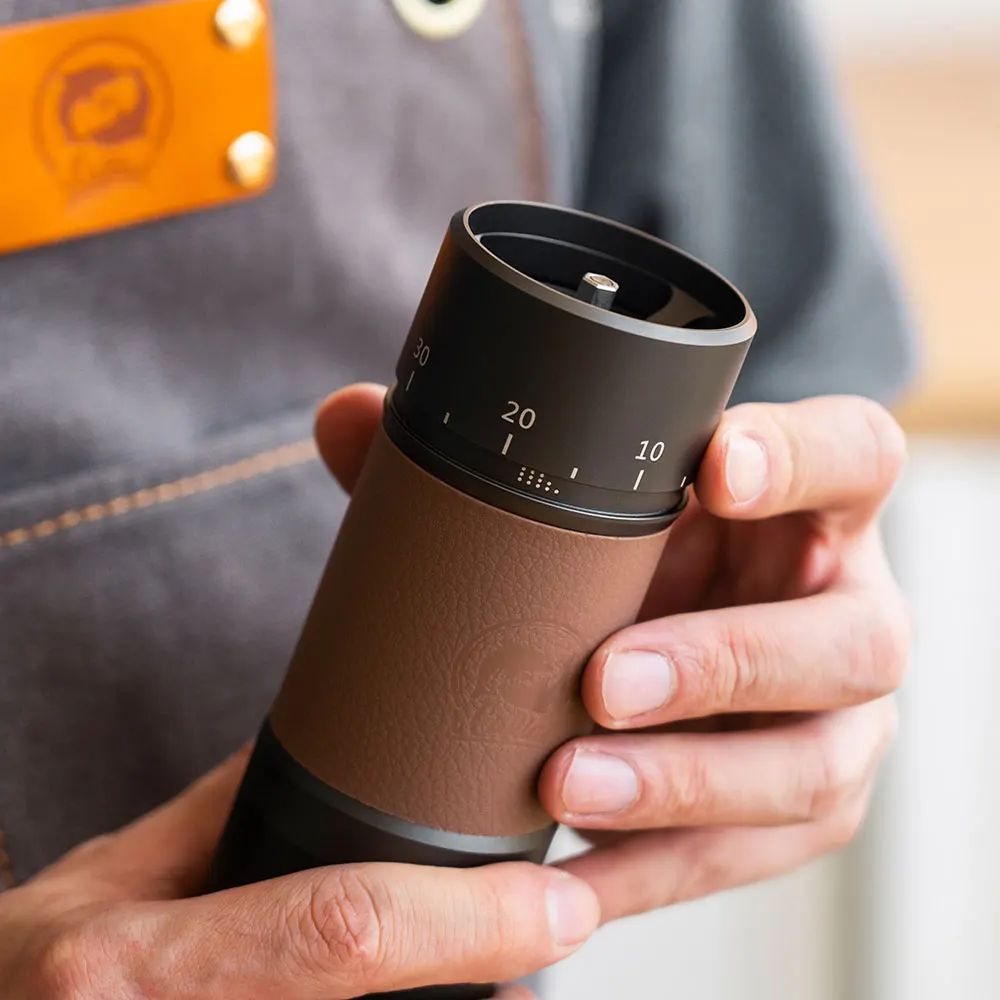
Using specialized hand grinders designed for espresso provides the adjustment range needed to accommodate these variables while maintaining precision.
Troubleshooting: Fixing Common Extraction Time Problems
When your espresso shots fall outside the ideal 25-35 second window, systematic troubleshooting helps identify and correct the issue:
Under-extraction (Shot Too Fast: <20 seconds)
* Symptoms: Sour taste, thin body, pale crema, watery mouthfeel
* Causes:
– Grind too coarse
– Dose too low
– Insufficient tamping
* Solutions (in priority order):
1. Adjust to a finer grind (start with small increments)
2. Increase dose slightly (0.5-1g)
3. Ensure proper tamping pressure and evenness
Over-extraction (Shot Too Slow: >40 seconds)
* Symptoms: Bitter taste, burnt flavor, dark or spotty crema
* Causes:
– Grind too fine
– Dose too high
– Machine issues (scale buildup, over-pressure)
* Solutions (in priority order):
1. Adjust to a coarser grind
2. Decrease dose slightly
3. Check machine maintenance needs
Channeling Problems
* Symptoms: Uneven flow, spurting, fast flow despite fine grind
* Causes:
– Uneven distribution
– Inconsistent tamping
– Grind consistency problems
* Solutions:
1. Improve distribution (WDT method using a fine tool to break clumps)
2. Practice consistent tamping technique
3. Check grinder burr alignment or upgrade to fine adjustment hand grinders
If your shot pulls in 15 seconds, try adjusting your grind two notches finer. Conversely, if it takes 45 seconds, go one or two notches coarser. Make one adjustment at a time to isolate variables.
Beyond the 30-Second Rule: When and How to Adjust Your Target Time
While the 30-second rule provides an excellent starting point, taste remains the ultimate arbiter of a good espresso. Several scenarios might warrant intentional deviation from standard extraction times:
- Light roasts often benefit from slightly longer extractions (30-40 seconds) to fully develop their complex acidity and avoid sourness
- Dark roasts might taste more balanced with shorter extractions (20-25 seconds) to minimize bitterness and emphasize sweetness
- Single-origin coffees from specific regions may have ideal extraction windows outside the standard range
Alternative extraction styles intentionally modify the standard approach:
* Ristretto (restricted extraction) uses finer grinding with less water for a concentrated, sweeter shot with less bitterness
* Lungo (extended extraction) uses more water for longer extraction, emphasizing different flavor compounds
Your personal preference plays an essential role in determining your “perfect” extraction time. Some coffee enthusiasts prefer the brightness of slightly shorter extractions, while others enjoy the fuller body of longer ones. The 30-second rule provides a foundation, but your taste preferences should guide refinements.
Essential Tools and Record-Keeping for Espresso Perfection
Achieving consistent results within your target extraction window requires proper tools:
Must-Have Tools:
* Quality burr grinder – The foundation of espresso preparation, providing consistent particle size distribution
* Precision scale – Measures both dose (coffee in) and yield (espresso out) to 0.1g accuracy
* Timer – Tracks extraction duration (built-in machine timers, standalone timers, or smartphone apps)
* Distribution tools – Ensures even coffee distribution before tamping
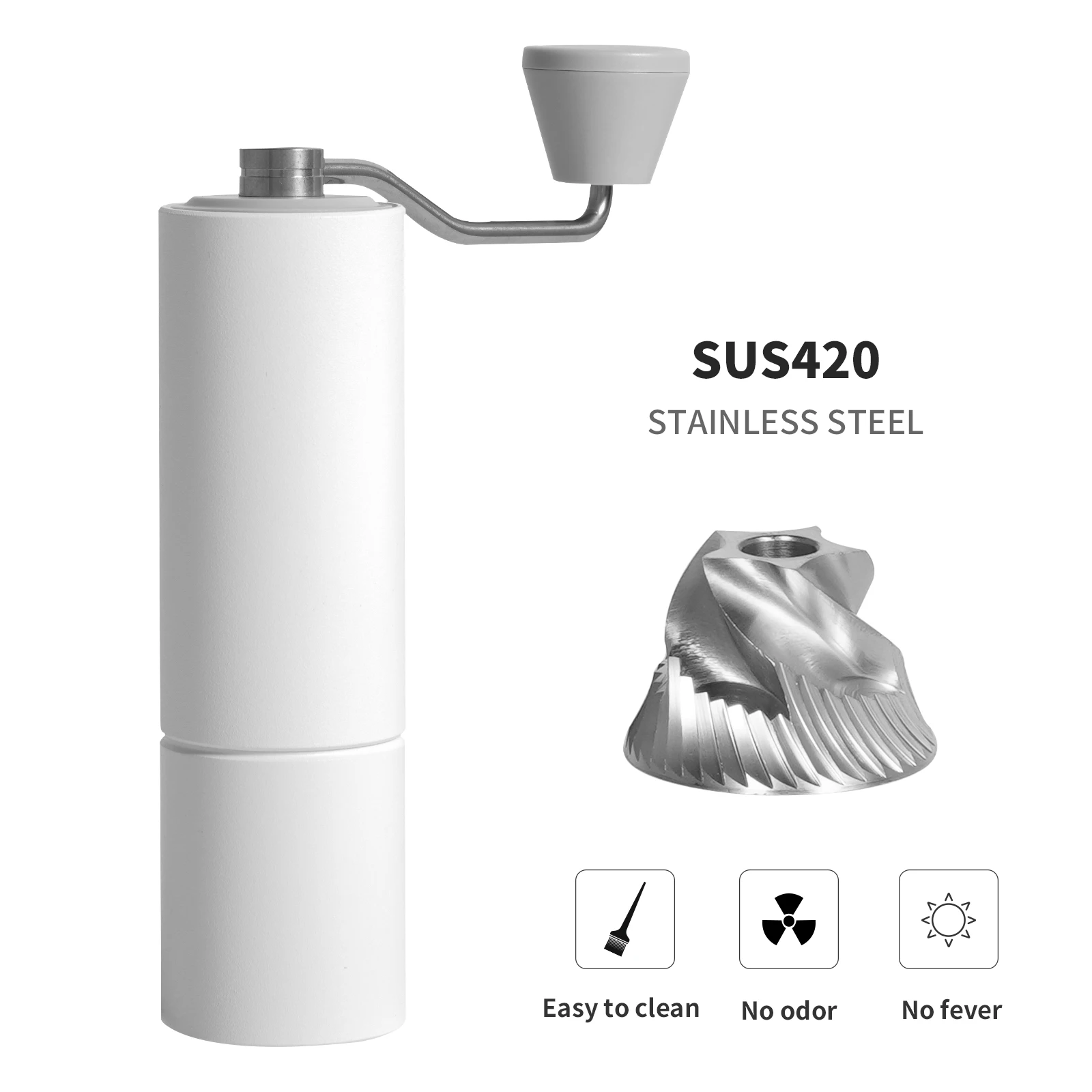
Record-Keeping Practices:
* Maintain an espresso journal or digital log
* Track key parameters: dose, yield, extraction time, grind setting, taste notes
* Systematic recording accelerates learning and helps identify patterns
* Notes help you reproduce successful shots and avoid repeating mistakes
The foundation of excellent espresso remains quality, freshly roasted coffee beans. Even perfect technique cannot overcome stale or poor-quality coffee. Mastering perfect espresso requires adjusting grind settings based on careful observation and documentation of results.
Fine Adjustment Hand Grinder, Precision Manual Grinder, Travel Coffee Grinder
Price range: $185.11 through $494.63 Select options This product has multiple variants. The options may be chosen on the product pageHand Burr Grinder, Hand Crank Coffee Grinder, Manual Espresso Grinder, Portable Coffee Grinder
Price range: $262.72 through $300.22 Select options This product has multiple variants. The options may be chosen on the product pageHand Burr Grinder, Manual Coffee Grinder Stainless Steel, Precision Manual Grinder
Price range: $183.64 through $187.52 Select options This product has multiple variants. The options may be chosen on the product pageManual Coffee Grinder Stainless Steel, Manual Espresso Grinder, Travel Coffee Grinder
Price range: $276.22 through $276.39 Select options This product has multiple variants. The options may be chosen on the product pageHand Crank Coffee Grinder, Manual Coffee Grinder for Espresso, Manual Coffee Grinder Stainless Steel
$349.15 Select options This product has multiple variants. The options may be chosen on the product page
When selecting equipment, prioritize tools that offer precision and consistency. At Savor Suite, we understand that achieving the perfect 30-second extraction requires grinders that provide reliable, repeatable results with the adjustment range needed for espresso. Flat burr hand grinders offer exceptional consistency for discriminating espresso enthusiasts.
Is the 30-Second Rule Different for Single vs. Double Shots?
The standard 30-second guideline typically refers to double shots, which have become the default in modern espresso preparation. Single shots operate on similar principles but with some important distinctions:
Single shots generally use 7-9g of coffee compared to 16-20g for doubles, creating a thinner puck with different flow dynamics. This reduced coffee mass often benefits from slightly shorter extraction times (20-25 seconds) to achieve balanced flavors.
Pulling balanced single shots presents unique challenges. The thinner coffee bed is more prone to channeling and uneven extraction, making consistency harder to achieve. Many baristas find that maintaining the standard 25-30 second window but adjusting grind slightly finer helps compensate for these challenges.
For home baristas, doubles generally provide more consistent results and better flavor balance, which explains why they’ve become the standard in specialty coffee.
Do Different Espresso Machines Require Different Extraction Times?
Different machine designs significantly impact ideal extraction timing:
Manual lever machines typically benefit from longer pre-infusion and total extraction times of 35-45 seconds. Their pressure profile—high at first, gradually declining—creates different extraction dynamics than pump machines.
Semi-automatic machines (the most common type) align well with the standard 25-35 second guideline, though variations exist between models based on their pump type and pressure stability.
Fully automatic machines control most variables internally but often allow programming extraction time. The standard 30-second guideline provides a good starting point for programming.
Superautomatic machines handle everything from grinding to brewing but typically use shorter extraction times (15-25 seconds) with adjusted grind/dose to compensate.
When switching between machine types, expect to adjust your grind setting significantly to maintain proper extraction timing. Pressure differences between machines can dramatically alter flow rates even with identical grind settings.
Can You Adjust Extraction Time Without Changing Grind Size?
While grind size remains the primary control for extraction time, several alternatives exist:
Adjusting dose provides meaningful control within reasonable limits. Increasing dose by 1g typically extends extraction by 2-4 seconds, while decreasing it shortens extraction accordingly. This approach works well when traveling with pre-ground coffee where grinding adjustments aren’t possible.
Modifying tamp pressure offers limited effectiveness. While dramatically different pressure changes extraction somewhat, maintaining consistent tamping is generally more important than using tamping to control flow rate.
Altering water temperature on machines with this capability affects extraction rate—higher temperatures extract faster, requiring slightly coarser grinding to maintain timing.
Flow control or pressure profiling, available on advanced machines, can significantly alter extraction dynamics without changing grind size, though these adjustments typically complement rather than replace proper grinding.
Each alternative has limitations and trade-offs. Dose adjustments can alter flavor balance beyond just extraction time. Temperature changes impact which compounds extract more readily. For consistent, repeatable results, grind adjustment remains the preferred primary variable when possible.


